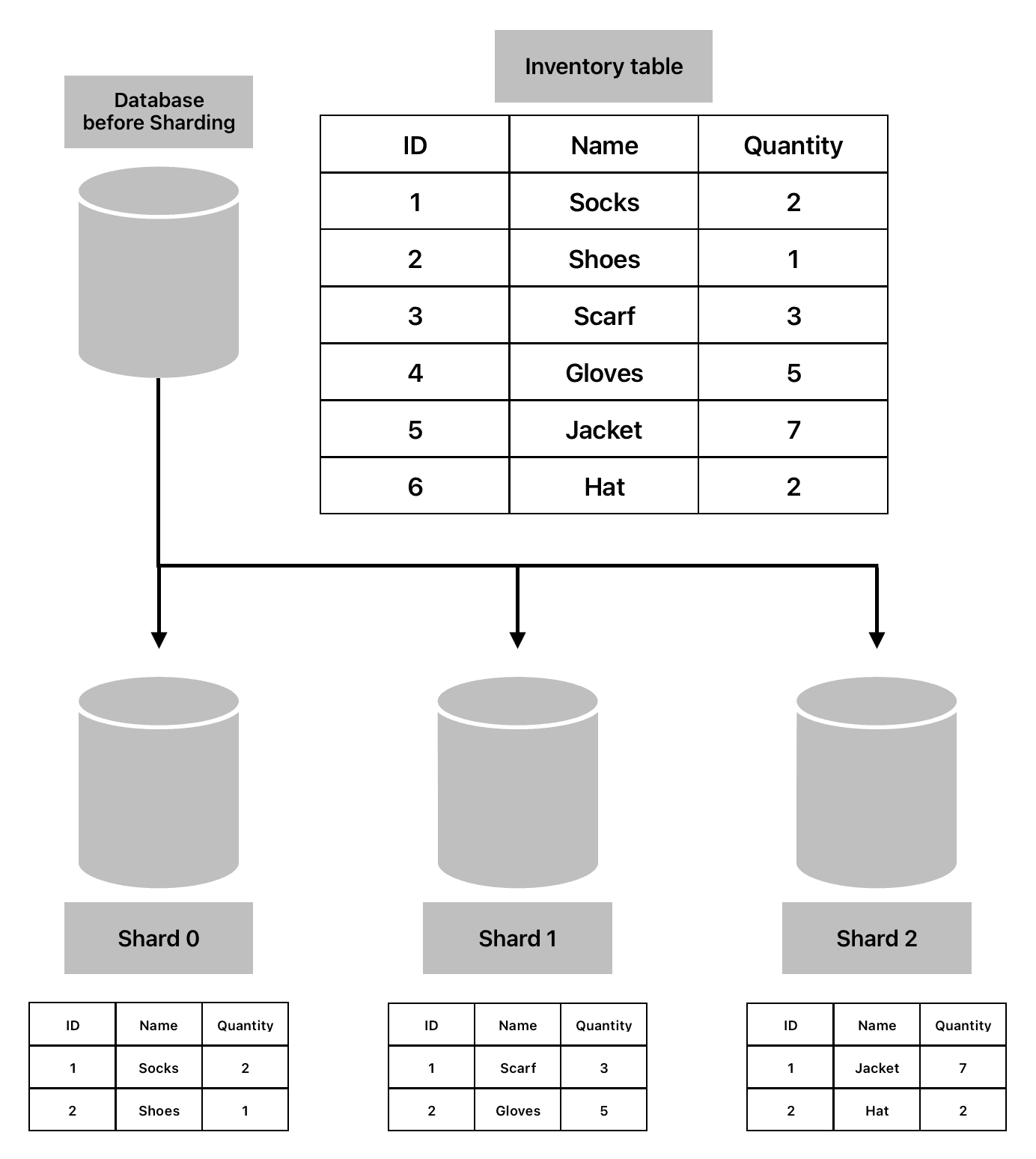Scaling with Sharding: Breaking Big Databases into Manageable Pieces
As applications grow, the volume of data they manage often becomes too large for a single database to handle efficiently. This is where sharding, a popular database scaling technique, comes into play.

🚀 Introduction
Hey there! 👋 Imagine trying to cram all your clothes into one tiny drawer—it’s messy, inefficient, and sooner or later, you’re going to run out of space. That’s what happens when you rely on a single database for your growing application. But don’t worry, there’s a way out: sharding! 📊
We’ll talk about how sharding splits your big, bulky database into smaller, more manageable pieces (called shards) and spreads them across multiple servers. Think of it like organizing your wardrobe into separate drawers for shirts, pants, and socks—it just makes life easier.
🧑🏼💻 How it works?
Below is an illustration of a database before and after sharding:

Before sharding, all data is stored in one table, creating scalability and performance issues. After sharding, the data is split across multiple databases, improving performance and scalability.
✅ Advantages:
- Improved Scalability (reduce load, horizontal scaling)
- Enhanced performance (faster queries, more efficient indexing)
- Cost Efficiency (more machines usually costs less than a single vertically scaled)
❌ Disadvantages:
- Rebalancing challenges (adding/removing shards requires rebalancing data)
- Increased Development Overhead (needs an extra logic for identifying the correct shard for data access)
- Data Distribution Imbalance (leads to overloaded shards)
- Complex Management (challange for backup, recovery, monitoring)
💁🏼♂️ Wrap up
The key to successful sharding lies in selecting the right sharding key, ensuring even data distribution, and preparing for the complexities it introduces. Sharding is a powerful technique for scaling databases, especially for applications with large datasets and high traffic. However, it is not always the solution.